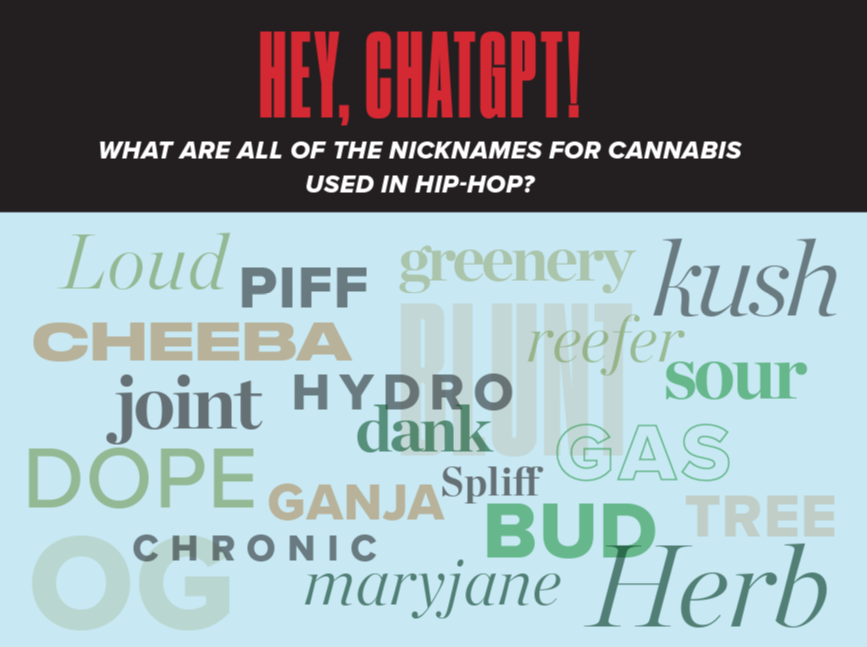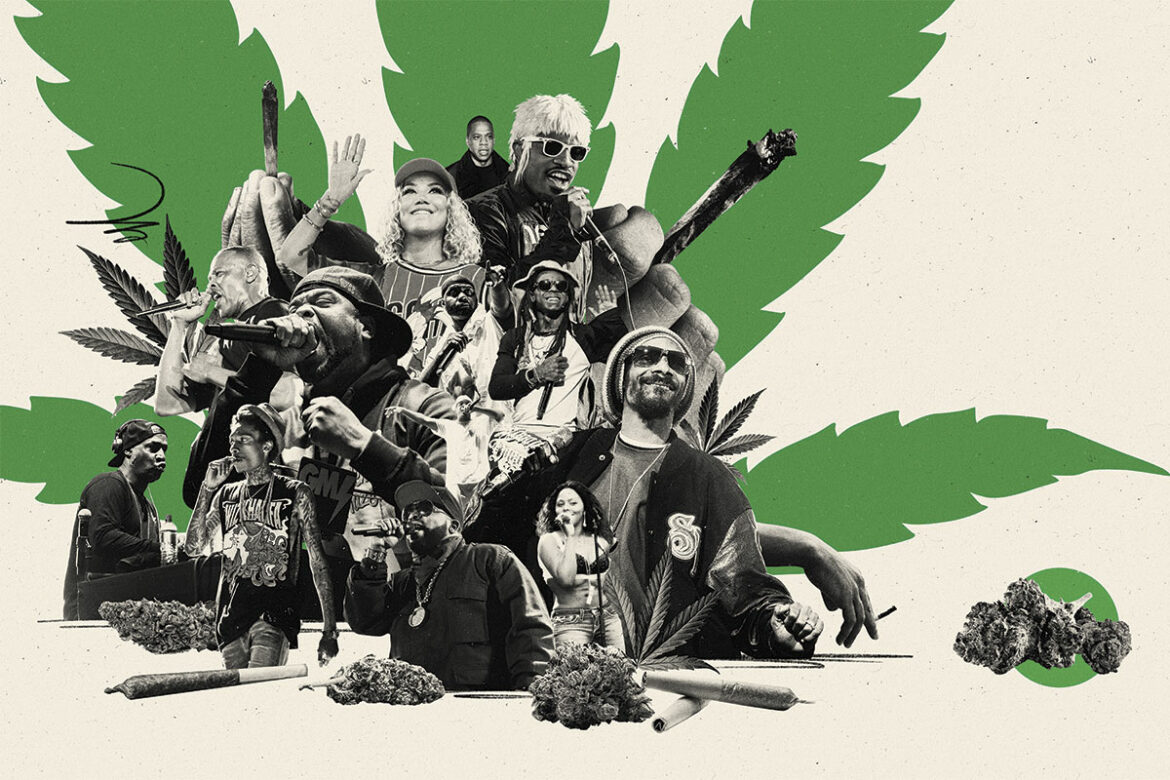CANNABIS + HIP-HOP
How Weed Fueled an Art Form
As hip-hop celebrates its 50th anniversary, widespread celebrations honoring the world’s most popular music genre are taking place. Yet not long ago, hip-hop was a marginalized, counterculture movement that was shunned in the mainstream. On a parallel path (and over the same time period), cannabis use went from being criminalized to where it is today: nearly a societal norm. Throughout those dual trajectories, hip-hop and cannabis have shared a symbiotic, mutually nourishing relationship.
Originating in the early 1970s at Bronx block parties, hip-hop’s young audience and in-your-face attitude gave the new musical form a rebellious feel. But when Grandmaster Flash and the Furious Five documented apocalyptic Bronx streetscapes in 1982’s “The Message,” hip-hop morphed into a powerful vehicle for social commentary. This was the moment when rappers took on the role of field reporters; their subject, the plight of inner cities. Rappers used their voices to shine a spotlight on the everyday lives of urban Americans, while the violence-laden crack epidemic of the late 1980s and early 1990s only added fuel for their art.
Some of the most iconic rap records show that marijuana use in urban communities is as much about anesthetizing daily traumas as it is about social enjoyment. On Mobb Deep’s iconic “Shook Ones, Pt. II,” the late Prodigy reveals how he passes through tough times, rapping, “I’m only nineteen but my mind is older / and when the things get for real my warm heart turns cold / another n**** deceased another story gets told / It ain’t nothing really, ayo Dun, spark the Philly / So I can get my mind off these yellow back n****.”
Similarly, the classic Wu Tang Clan song “C.R.E.A.M.,” sees Inspectah Deck deliver one of rap’s best verses testifying to the struggles faced by many urban youth:
“Every day, I escape from jakes givin’ chase, sellin’ base, smokin’ bones in the staircase / Though I don’t know why I chose to smoke sess, I guess that’s the time when I’m not depressed.”
Obviously, artists of other musical genres had sung marijuana’s praises. Even after facing legal troubles for weed possession in 1930 and 1954, Louis Armstrong stressed marijuana’s role on the jazz scene and endorsed its creativity-enhancing properties in his autobiography Satchmo: My Life in New Orleans. Then there’s always Willie Nelson’s “Roll Me Up and Smoke Me When I Die,” or Tom Petty’s “You Don’t Know How It Feels” in which he sings, “Let me get to the point / Let’s roll another joint.” That said, hip-hop and weed were an especially good match— the music’s evocative poetry led to vivid listening experiences among the high.

Though the skill showcased by hip-hop artists during its infancy sparked a movement, the art form remained largely stigmatized by the mainstream music industry and was notably absent from major award shows: A Grammy for Best Rap Album wasn’t awarded until 1995, and even then the nominees chosen largely ignored the genre’s core. Similarly, despite decades of normalization in many social circles, recreational cannabis use remained illegal, and weed was propagandized as a gateway drug.
Nevertheless, together, weed and hip-hop chugged onward toward widespread acceptance. Hip-hop artists continued to sing (or rap) the praises of weed in all its forms, while marijuana returned the favor by offering temporary relief from the ills of their lives.
Cannabis use, while still a gray area in the mainstream, was very visible throughout hip-hop culture, and, as appreciation for hip-hop expanded, so did general acceptance of cannabis among hip-hop’s fans. Records like Luniz’s “I Got 5 On It” and Outkast’s “Crumblin’ Erb” were good-natured celebrations of the drug, while Dr. Dre’s entire 2001 album feels like an urban take on a stoner comedy film. Superstars including Snoop Dogg, Devin The Dude, Method Man, and Redman even wove cannabis into their public images. Given the popularity of the music (and the influence of its major figures), it’s no wonder that conversations that challenged marijuana’s illegality gained traction.
RELATED: The Wide World of Weed
As weed headed toward legalization, rap music was in a historic run of its own. In 1996, just as California voters passed Proposition 215 legalizing medical marijuana in that state, the hip-hop world celebrated landmark albums by The Fugees (The Score), 2pac (All Eyez On Me), Nas (It Was Written), Jay-Z (Reasonable Doubt), Ghostface Killah (Iron Man), De La Soul (Stakes Is High), and Outkast (ATLiens). All had ample lyrics commemorating the relationship between hip-hop and weed.
Since Prop 215, cannabis has been legalized in 25 states and is largely decriminalized nationwide. Meanwhile, hip-hop has broken free from imposed limits to become one of the world’s most popular genres. And with that, rap stars like Jay-Z, Lil Wayne, and Wiz Khalifa are entering the cannabis industry as entrepreneurs, further cementing weed as a cornerstone of hip-hop’s legacy.
High Art
Music to Smoke By is a playlist by Alain Clerine, editor of NYS Music, an online magazine with the focus of providing music industry news as it relates to the communities throughout New York state.



